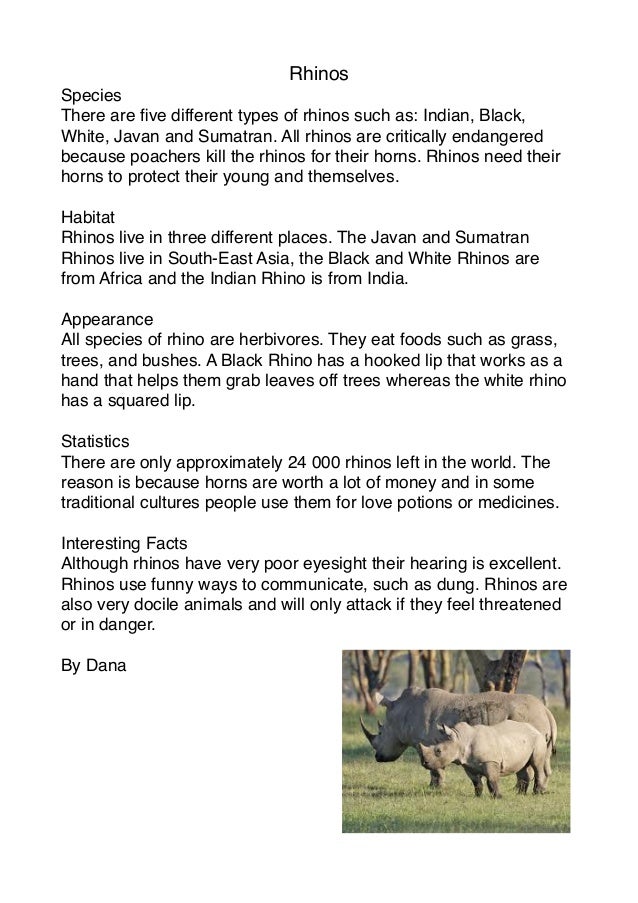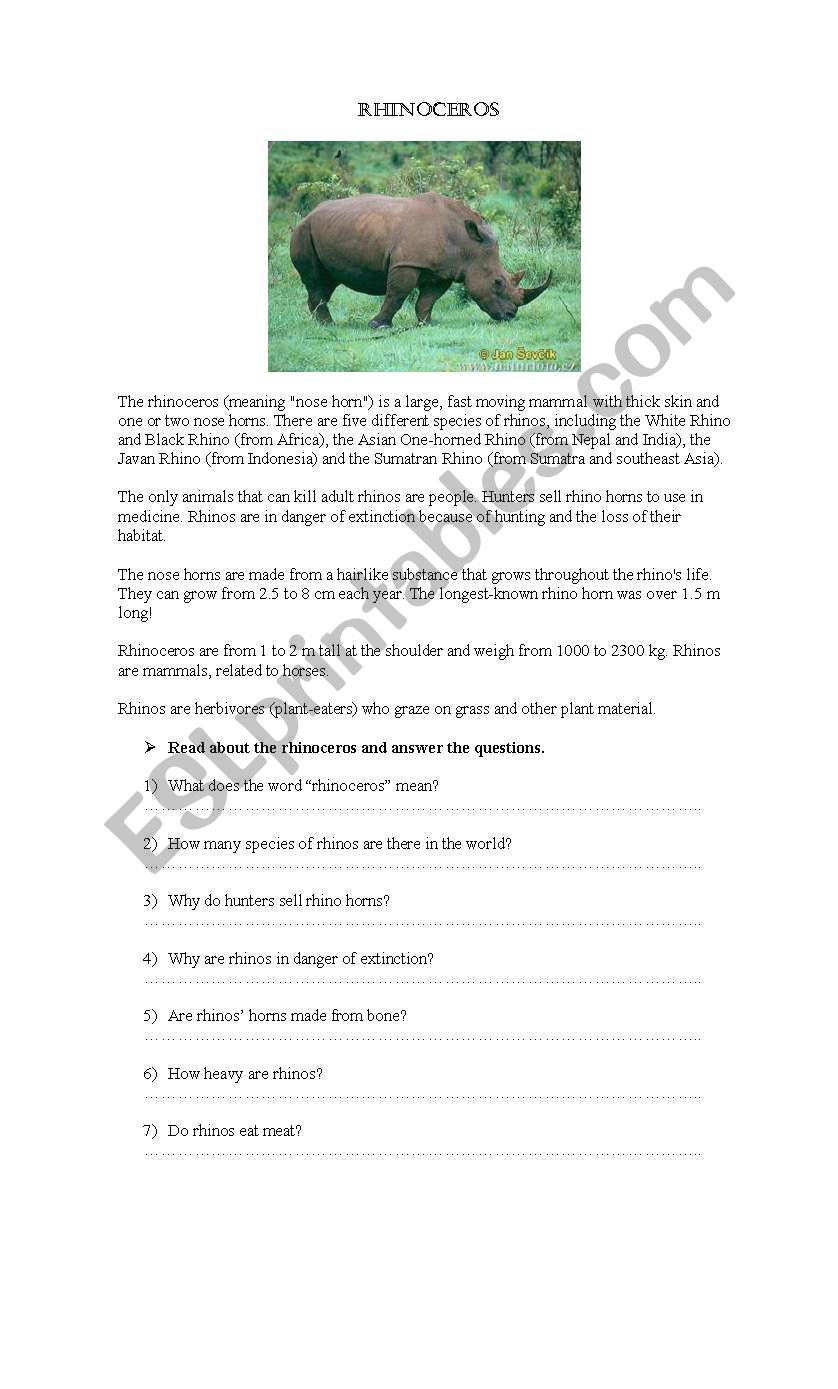

Subhankar Banerjee: Youth Across North America Are Fighting For Their Future Climate Subhankar Banerjee 2010 James had visited the San Diego Zoo and thought rhinoceros is the coolest animal on the planet. In Sao Paulo's city council election in 1959, the top vote getter among hundreds of candidates was Cacareco - a rhinoceros from the zoo. "This whole world is wild at heart.and weird on top." greygirlbeast 2010 9th, 2010 02: 36 am (UTC) 'The rhinoceros is all that's left of the unicorn. Through Central Borneo an Account of Two Years' Travel in the Land of Head-Hunters Between the Years 19 Carl Lumholtz 1886
noun massive powerful herbivorous odd-toed ungulate of southeast Asia and Africa having very thick skin and one or two horns on the snoutĪ man with many tail-feathers from the rhinoceros hornbill (_buceros rhinoceros_) stuck into his rattan cap seated himself on a crude platform which had been built on upright poles over the water.
 noun Any of several large herbivorous pachyderms native to Africa and Asia of the five genera in the family Rhinocerotidae, with thick, gray skin and one or two horns on their snouts.įrom WordNet 3.0 Copyright 2006 by Princeton University. It alights on the back of the rhinoceros in search of parasitic insects.įrom Wiktionary, Creative Commons Attribution/Share-Alike License. noun (Zoöl.) An African beefeater ( Buphaga Africana). noun (Zoöl.) a very large beetle of the genus Dynastes, having a horn on the head. noun (Zoöl.) an auk of the North Pacific ( Cerorhina monocrata) which has a deciduous horn on top of the bill. They are large and powerful, and usually have either one or two stout conical median horns on the snout. noun (Zoöl.) Any pachyderm belonging to the genera Rhinoceros, Atelodus, and several allied genera of the family Rhinocerotidæ, of which several living, and many extinct, species are known. See above.įrom the GNU version of the Collaborative International Dictionary of English. noun The typical genus of Rhinocerotidæ, containing all the living and some of the extinct forms. The two-horned species include the Sumatran or Malaccan rhinoceros, R. javanus, distinct from the Indian species, inhabiting Java, the Malay peninsula, etc. unicornis, which inhabits the warmer parts of Asia, attains a height of 5 feet, and has the horn short and stout the Javan rhinoceros, R. Of the existing one-horned species are the Indian rhinoceros, R. tichorhinus, the woolly rhinoceros, which formerly ranged over Europe, including the British Isles. The best-known of the extinct species is R. The living species are now confined to the warmer parts of Africa and Asia, and are hairless or nearly so but these animals formerly had a much more extensive range, not only in the Old World, but also in America. Rhinoceroses live mainly in marshy places, in thick or rank vegetation, and subsist entirely upon vegetable food. When two horns are present they are one behind the other in the median line, and the hinder one rests over the frontal bone, the front one being in any case borne upon the nasal bones. The head is especially long in the nasal region, and there are usually one or two massive upright horns, without any bony core, the substance of the horn being epidermal only. The tail is short the ears are high and rather large the head is very large and unshapely, supported upon a thick stocky neck the muzzle is blunt, and the upper lip freely movable. The legs are short, stout, and clumsy, with odd-toed feet, whose three digits are incased in separate hoofs. They are huge ungainly quadrupeds, having an extremely thick and tough or hard skin, thrown into various buckler-like plates and folds.
noun Any of several large herbivorous pachyderms native to Africa and Asia of the five genera in the family Rhinocerotidae, with thick, gray skin and one or two horns on their snouts.įrom WordNet 3.0 Copyright 2006 by Princeton University. It alights on the back of the rhinoceros in search of parasitic insects.įrom Wiktionary, Creative Commons Attribution/Share-Alike License. noun (Zoöl.) An African beefeater ( Buphaga Africana). noun (Zoöl.) a very large beetle of the genus Dynastes, having a horn on the head. noun (Zoöl.) an auk of the North Pacific ( Cerorhina monocrata) which has a deciduous horn on top of the bill. They are large and powerful, and usually have either one or two stout conical median horns on the snout. noun (Zoöl.) Any pachyderm belonging to the genera Rhinoceros, Atelodus, and several allied genera of the family Rhinocerotidæ, of which several living, and many extinct, species are known. See above.įrom the GNU version of the Collaborative International Dictionary of English. noun The typical genus of Rhinocerotidæ, containing all the living and some of the extinct forms. The two-horned species include the Sumatran or Malaccan rhinoceros, R. javanus, distinct from the Indian species, inhabiting Java, the Malay peninsula, etc. unicornis, which inhabits the warmer parts of Asia, attains a height of 5 feet, and has the horn short and stout the Javan rhinoceros, R. Of the existing one-horned species are the Indian rhinoceros, R. tichorhinus, the woolly rhinoceros, which formerly ranged over Europe, including the British Isles. The best-known of the extinct species is R. The living species are now confined to the warmer parts of Africa and Asia, and are hairless or nearly so but these animals formerly had a much more extensive range, not only in the Old World, but also in America. Rhinoceroses live mainly in marshy places, in thick or rank vegetation, and subsist entirely upon vegetable food. When two horns are present they are one behind the other in the median line, and the hinder one rests over the frontal bone, the front one being in any case borne upon the nasal bones. The head is especially long in the nasal region, and there are usually one or two massive upright horns, without any bony core, the substance of the horn being epidermal only. The tail is short the ears are high and rather large the head is very large and unshapely, supported upon a thick stocky neck the muzzle is blunt, and the upper lip freely movable. The legs are short, stout, and clumsy, with odd-toed feet, whose three digits are incased in separate hoofs. They are huge ungainly quadrupeds, having an extremely thick and tough or hard skin, thrown into various buckler-like plates and folds. 
There are several living as well as many fossil species. noun A large pachydermatous perissodactyl mammal with a horn on the nose any member of the genus Rhinoceros or family Rhinocerotidæ.noun Any of several large thick-skinned ungulate mammals of the family Rhinocerotidae, having one or two upright horns on the snout, and including the black rhinoceros (Diceros bicornis) and white rhinoceros (Ceratotherium simum) of Africa, the Indian rhinoceros (Rhinoceros unicornis) of India and Nepal, and the Javan rhinoceros (Rhinoceros sondaicus) and Sumatran rhinoceros (Dicerorhinus sumatrensis) of Southeast Asia.From The American Heritage® Dictionary of the English Language, 5th Edition.







 0 kommentar(er)
0 kommentar(er)
